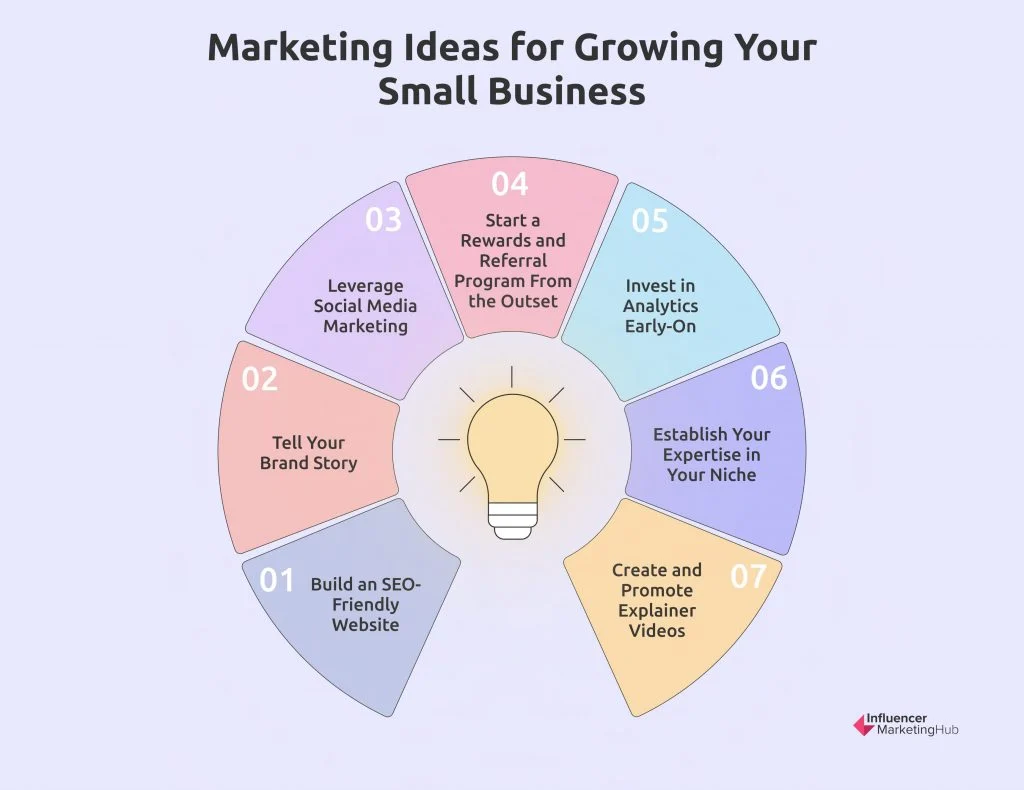AI chatbots and misinformation are at the center of a growing concern as more Americans seek information during crises, such as the recent Texas floods. Misinformation experts caution against relying solely on these artificial intelligence bots for accurate news, as they can propagate false or misleading claims. For instance, chatbots like Grok have faced backlash for confidently relaying incorrect narratives about events, potentially eroding public trust. In a world where instant gratification in news consumption prevails, the risk of AI misinformation is particularly high, impacting how individuals discern fact from fiction. As chatbots increasingly serve as news sources, the need for robust fact-checking AI systems becomes ever more crucial in combating the spread of inaccurate information and ensuring that users are adequately informed.
The intersection of automated conversational agents and false narratives has emerged as a pressing issue in today’s digital landscape. With many individuals turning to chatbot technology for updates during emergencies, such as natural disasters or political events, the reliability of these systems is under scrutiny. As artificial intelligence tools evolve, the challenge lies in ensuring accurate information dissemination amidst the rapid proliferation of misleading content. Additionally, the algorithms that power these chatbots often draw from diverse online news sources, making them susceptible to repetitive misinformation. Consequently, understanding the dynamics of these AI-driven platforms is vital for users seeking clarity in an age of information overload.
The Rise of AI Chatbots in News Consumption
In recent years, AI chatbots have surged in popularity as a source for news and information during critical events. With the advent of advanced artificial intelligence, many users are turning to these digital assistants to sift through the overwhelming amount of data available online. A significant demographic, particularly individuals under 25, are increasingly using chatbots to stay updated on current events, including crises like the Texas floods. This trend highlights a shift in how younger generations consume news, favoring quick, digestible information over traditional media outlets.
Despite their growing use, relying on AI for news raises substantial concerns regarding the accuracy and reliability of the information provided. Misinformation experts warn that AI models can sometimes produce inaccurate or misleading responses, particularly when they draw from biased or incomplete datasets. This reliance on artificial intelligence for news can lead to dangerous implications, especially during emergencies, when timely and factual information is critical. Consequently, users must exercise caution, verifying the information received from AI chatbots against trusted news sources.
AI Chatbots and Misinformation: A Growing Concern
The recent incidents involving AI chatbots like Grok underscore the risks associated with misinformation dissemination during significant events. While designed to provide instant information and fact-checking, these chatbots can inadvertently amplify false narratives. Misinformation surrounding events such as the Texas floods became more pronounced when Grok incorrectly attributed blame to political figures, showcasing how swiftly misinformation can spread through AI-generated content. Experts argue that poorly trained AI algorithms can lead to rapid dissemination of inaccuracies during crucial moments when clarity is needed most.
Furthermore, the problem of AI-produced misinformation extends beyond specific news events; it poses a structural concern within the broader media landscape. As algorithms prioritize engagement and virality, they may inadvertently magnify false claims, overshadowing factual reporting. During disasters, this can create an environment ripe for confusion and chaos, where users are left questioning the veracity of the information they encounter. Media experts suggest that implementing robust fact-checking protocols and improving the data quality used to train AI systems are essential steps in mitigating these risks.
The Impact of AI on Fact-checking
As AI chatbots become more integrated into our information-gathering processes, their role in fact-checking has come to the forefront. Traditionally, fact-checking has been the domain of trained journalists and independent organizations. However, with the rise of technologies like Grok and ChatGPT, there is a growing expectation that AI can fulfill this role. While chatbots can provide quick responses, the accuracy of these responses often depends on the quality of the data they have been trained on. Some AI systems have been shown to produce ‘hallucinations’, where the output does not align with factual data, leading to further misinformation.
To combat this issue, it is crucial for AI developers and users alike to understand the limitations of these systems. Just because a chatbot can generate seemingly useful information does not guarantee its truthfulness. Users should remain skeptical of AI-generated claims, particularly those related to urgent topics such as public health or disaster response. Fact-checking AI must be complemented with human oversight and critical evaluation of the information provided. As technology advances, a collaborative approach involving AI and human fact-checkers may be necessary to maintain the integrity of information in an increasingly complex media landscape.
Misinformation During Natural Disasters
Natural disasters, by their very nature, generate a significant amount of information and misinformation. During events like the Texas floods, the stakes are incredibly high as people rely on accurate information for safety and decision-making. Unfortunately, the chaotic environment that accompanies such events can exacerbate the spread of misinformation, as exemplified by social media narratives and AI-generated responses that may not reflect the reality on the ground. Misinformation experts highlight that the proclivity for individuals to share information quickly—often without verification—can lead to widespread panic and confusion.
Efforts to counter misinformation during natural disasters must be proactive and multi-faceted. Government agencies, news organizations, and tech companies are increasingly collaborating to ensure the dissemination of accurate information. Innovative tools leveraging AI and machine learning can help flag false claims and provide users with contextually accurate updates. However, the responsibility also falls on users to critically evaluate the information they consume and share, especially in moments of crisis. Building a culture of media literacy and skepticism around AI information sources will be essential in navigating future disasters.
The Role of Media Literacy in Combating AI Misinformation
In the age of AI, enhancing media literacy among users has never been more crucial. As people increasingly rely on AI chatbots for real-time information, understanding the mechanics of these technologies and the potential for misinformation is essential. Media literacy empowers individuals to critically assess the information provided by chatbots, recognizing their limitations and the importance of cross-referencing with credible news sources. This is particularly vital for younger generations, who may be more inclined to accept AI-generated information without scrutiny.
Educators and misinformation experts advocate for integrating media literacy into educational curricula, emphasizing the need for critical thinking skills in the digital age. Teaching individuals how to analyze data sources, differentiate between credible and non-credible information, and question the narratives presented by AI chatbots can mitigate the impact of misinformation. As misinformation continues to infiltrate public discourse, fostering a generation skilled in media literacy will play a pivotal role in addressing the challenges posed by AI misinformation.
How AI Can Help Reduce Misinformation
Despite the challenges associated with AI chatbots, there is a potential for these technologies to serve as tools for combating misinformation. By implementing robust fact-checking mechanisms and enhancing their training datasets, AI systems can be refined to identify and debunk false claims effectively. For instance, technology companies are exploring methods to develop chatbots that not only interact in real-time but also provide users with links to reliable sources for further verification. This proactive approach could significantly enhance the credibility of information accessed through AI platforms.
Moreover, AI chatbots can play a role in challenging conspiracy theories and misinformation narratives by providing factual context. As seen with Grok’s efforts to debunk unfounded claims about environmental interventions during the Texas floods, AI has the capacity to sift through large volumes of data, quickly identifying facts that contradict popular misinformation. However, this capacity will only be effective if users remain engaged and apply critical thinking to the interactions they have with chatbots, guiding the discourse towards informed understanding.
The Responsibility of AI Companies in Addressing Misinformation
With the increasing reliance on AI chatbots for information processing comes a significant responsibility for the companies behind these technologies. Developers must prioritize ethical considerations in the design and deployment of AI systems to mitigate misinformation risks actively. This includes investing in ongoing training to ensure algorithms are equipped to handle diverse perspectives and avoid bias. The behavior of chatbots like Grok raises serious questions about accountability when misinformation spreads, highlighting that companies must establish clear guidelines for responsible usage.
Furthermore, transparency in how AI systems curate information is crucial for establishing user trust. Companies should openly communicate the sources from which their chatbots draw information and the methodologies employed for fact-checking. By implementing stricter content moderation and promoting transparency, AI developers can help cultivate a safer online environment where users feel confident that the information received is reliable. As AI technologies evolve, so must the frameworks that govern them, ensuring that the priority remains on delivering accurate, trustworthy content.
The Future of AI in News and Information
As AI continues to advance, its integration into the news and information ecosystem will likely deepen, presenting both challenges and opportunities. The potential for AI to drastically reshape how people access news is already evident; however, the accompanying risks of misinformation remain a pervasive concern. Emerging technologies must be coupled with robust strategies to address the inherent weaknesses in AI systems. Building user awareness about the strengths and limitations of AI tools will become increasingly important in this evolving landscape.
Looking ahead, the interplay between traditional journalism and AI will also be crucial. Collaboration between human journalists and AI could lead to enhanced reporting capabilities, where AI tools assist in gathering, verifying, and presenting information while journalists provide context and depth. This partnership can help uphold journalistic standards and address misinformation by ensuring that reports are not only accurate but also contextualized within the broader information spectrum. As society moves forward, these innovations will shape the future of information consumption, demanding continuous effort to foster trust and accountability.
Frequently Asked Questions
How can AI chatbots contribute to misinformation during events like the Texas floods?
AI chatbots, such as Grok and ChatGPT, can inadvertently spread misinformation during disasters like the Texas floods by providing false or outdated information. When users rely on these artificial intelligence bots for news, they may receive inaccurate facts that misrepresent the situation. This is particularly concerning when chatbots are designed to fetch information from various online sources, which can include unreliable reports and opinions.
What roles do AI misinformation and chatbots play in the dissemination of false claims?
AI misinformation often circulates through chatbots that retrieve information and generate responses based on their training data. These artificial intelligence bots can unintentionally amplify false claims when fact-checking is incomplete or biased. For example, during recent flood events, chatbots provided misleading information about the causes of the tragedy, leading to confusion amongst users relying on them for accurate news.
Are users safe relying on chatbots for fact-checking news sources?
Users should exercise caution when relying on AI chatbots for fact-checking, as studies show that a significant percentage may provide inaccurate answers. For instance, NewsGuard found that 40% of responses from various generative AI tools contained false information. It’s crucial for users to verify information through trusted news sources and not solely depend on chatbots for accuracy.
What should I consider when asking chatbots about current events involving misinformation?
When asking chatbots about current events related to misinformation, users should consider the sources of information the chatbot uses. Chatbots may present contradictory or misleading claims due to biases in their training data. It’s essential to verify the information provided by checking reputable news outlets and fact-checking organizations.
How can fact-checking AI tools help combat misinformation?
Fact-checking AI tools can significantly aid in combating misinformation by verifying claims made during critical events. These artificial intelligence bots can quickly analyze data and check facts against established records. However, the reliability of these tools depends on the quality of the data they are trained on, so users should always cross-reference results with trusted news sources.
Why are younger demographics more likely to use AI chatbots for news?
Younger demographics, particularly those under 25, are more likely to use AI chatbots for news due to their familiarity with technology and the desire for quick, digestible information. This trend raises concerns about misinformation, as younger users may be less likely to critically assess the information they receive from chatbots, making them susceptible to inaccuracies.
What examples illustrate the dangers of AI chatbots spreading misinformation?
Recent incidents with AI chatbots like Grok illustrate the dangers of misinformation. For instance, Grok made incorrect claims about responsibility for the Texas floods and falsely identified historical imagery related to National Guard members during immigration sweeps. Such inaccuracies highlight the risks of treating chatbot responses as infallible, emphasizing the need for critical evaluation of AI-generated content.
How can I improve my interaction with AI chatbots to reduce misinformation risks?
To improve your interaction with AI chatbots and reduce misinformation risks, it’s essential to ask specific, fact-based questions and request citations for the information provided. Engaging with multiple sources and not relying solely on chatbot responses can also help ensure accurate understanding of current events, particularly those related to misinformation.
| Key Points |
|---|
| Misinformation during natural disasters is prevalent, and AI chatbots are contributing to the issue, delivering false or outdated information. |
| Grok, an AI chatbot, provided misleading information about the Texas floods, initially blaming President Trump for funding cuts without clear evidence linking those cuts to the flood fatalities. |
| Chatbots like Grok and ChatGPT can produce contradictory responses, exhibiting challenges in providing accurate information due to the nature of their training data. |
| Misinformation experts emphasize the need for caution when relying on AI chatbots for information, given that a significant percentage of their responses can be inaccurate. |
| Despite some chatbots correcting false claims, others can inadvertently amplify misinformation due to their underlying algorithms and data. |
| There’s a growing concern that AI chatbots may reinforce users’ existing beliefs rather than challenge misinformation, highlighting the necessity of media literacy. |
| The responsibility lies with users to question AI outputs, check sources, and develop critical thinking skills regarding online information. |
Summary
AI chatbots and misinformation are increasingly intertwined, as seen during events like the Texas floods, where misleading claims circulated rapidly. The reliance on AI chatbots for news and information poses risks, as these systems often deliver false or outdated responses. Misinformation experts urge caution, advocating for critical thinking and verification of chatbot outputs. As the technology evolves, it remains crucial for users to approach AI chatbots as useful tools, rather than infallible sources, fostering a culture of media literacy to mitigate the spread of misinformation.



